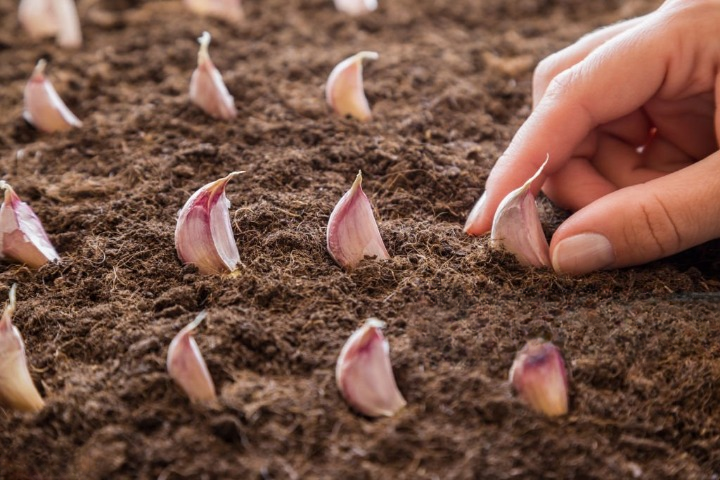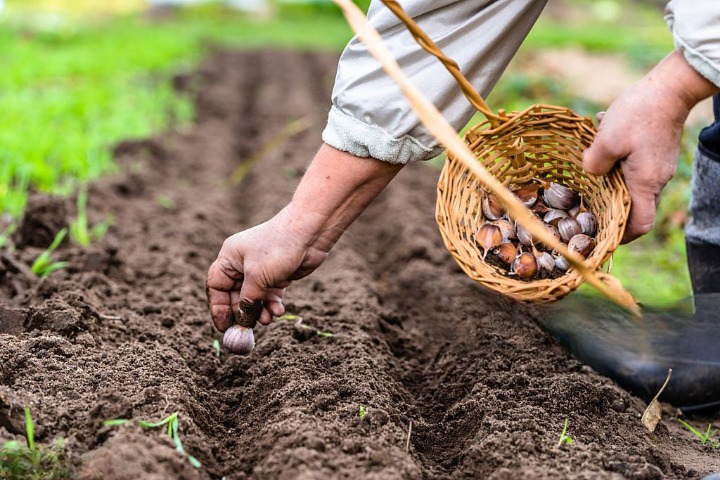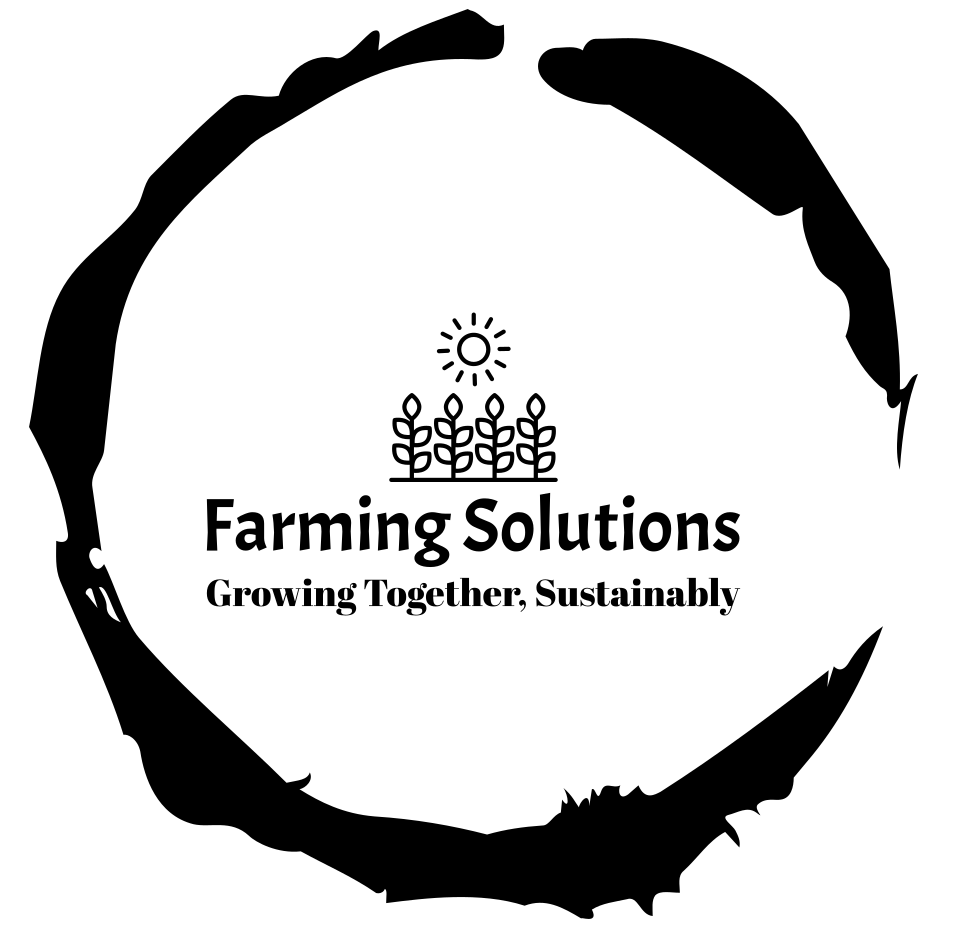
Discover the hidden secrets of garlic cultivation for a thriving garden. Unlock essential tips to enhance your garlic growing experience.
Garlic, often revered for its aromatic qualities, serves not only as a spice but also finds its place in various pickles and delectable dishes. Cultivating this versatile herb requires a nuanced approach, considering factors like suitable land and soil, breed identification, seedling preparation, fertilizer management, irrigation, weed management, and safeguarding against pests and diseases.

To ensure a bountiful garlic harvest, opt for soil rich in organic matter that is well-drained. This creates an environment conducive to the plant's growth and development.
Garlic, a versatile spice used in various pickles and delicious dishes, comes in different varieties suitable for diverse climates. Local varieties are often preferred, and choosing between hardneck and softneck garlic depends on your garden's conditions. Local varieties are commonly cultivated, emphasizing the adaptability of garlic to diverse climates. When it comes to seedling preparation, meticulous attention is required. The outer rows of dry garlic are planted, with cloves placed 3-4 cm apart, ensuring proper spacing for optimal growth. Approximately 300-350 kg of seed garlic is needed per hectare.
Balanced fertilizer application is crucial for garlic cultivation. Per hectare, the recommended fertilizer composition includes 10 tons of dung, 200 kg of urea, 125 kg of TSP, 100 kg of MOP, 20 kg of zinc sulfate, 10 kg of borax, and 100 kg of gypsum. Mixing these with the soil during land preparation sets the stage for a nutrient-rich environment. Subsequent top dressing at 30 and 60 days involves applying 100 kg of urea and 50 kg of MOP per hectare each time.

For optimal garlic growth, occasional irrigation is necessary if the soil lacks moisture. Post-irrigation, soil cutting and raking are essential, coupled with timely weed removal to prevent competition for nutrients.
Garlic requires consistent moisture throughout its growing period, especially during the crucial early stages. However, overwatering can lead to root rot, so it's essential to strike a balance. Water deeply when the soil feels dry, and consider reducing watering as the garlic plants approach maturity.
To ensure robust bulb development, fertilize your garlic crop appropriately. Begin with a balanced fertilizer at planting time and follow up with nitrogen-rich fertilizer as the plants start to emerge. Avoid excessive nitrogen in the later stages, as it may hinder bulb formation.
Weeds compete with garlic for nutrients and moisture, so it's crucial to keep the garden bed weed-free. Mulching helps suppress weeds while retaining soil moisture. Additionally, inspect your garlic plants regularly for pests such as aphids or garlic-eating nematodes. Consider natural remedies like neem oil or companion planting to deter pests without harmful chemicals.
Garlic is susceptible to diseases such as white rot, rust, and fungal infections. To prevent these issues, practice crop rotation, provide adequate spacing between plants, and avoid overhead watering. If signs of disease appear, promptly remove and destroy affected plants to prevent the spread.
Common pests like garlic borers and thrips can threaten your garlic crop. Introduce beneficial insects like ladybugs and lacewings to naturally control pest populations. Neem oil and garlic-based insecticides also serve as effective organic alternatives. Regular monitoring and early intervention are key to preventing pest infestations.
If your garlic plants exhibit uneven growth or small bulbs, it may be due to inadequate soil preparation or nutrient deficiencies. Conduct a soil test to identify any deficiencies and amend the soil accordingly. Consistent watering and proper fertilization throughout the growing season are essential for uniform and healthy garlic bulbs.
Insect Introduction
Thrips, though small and inconspicuous, pose a significant threat to garlic crops. Their sap-sucking behavior can lead to leaf drying, plant death, and reduced yields.
Identifying Thrips
Distinguishing features include small, yellowish females, dark brown Puramnas, and yellow or white baby bugs with long spots on their backs.
Symptoms of Damage
Thrips infestation manifests as silvery leaves with tiny brown spots due to sap-sucking. Severe attacks result in dried-up leaves and stunted tubers.
Management Strategies
Boosting spider populations through white sticky traps and applying approved pesticides effectively controls thrips infestation.
Garlic Disease Management
Purple Bossnach / Bossnite
Introduction
This disease wreaks havoc on onions, affecting leaves and stems at any age. Yield reduction, malnourished seeds, and market price depreciation are common consequences.
Disease Causes
Alternaria pori and Stemphyllium botryosum are the culprits behind this debilitating garlic disease.
Pattern of Damage
Small water-soaked purple spots on the stem escalate into dry, scaly patches, causing affected leaves to die gradually. The base of the leaf or stem breaks down, leading to malnourished seeds and reduced yields.
Favorable Environment and Spread
Rainy conditions facilitate the rapid spread of this disease through infected seeds, plant parts, and wind.
Management Strategies
Utilize resistant or tolerant garlic varieties.
Ensure the use of disease-free seeds.
Adopt crop rotation practices, avoiding consecutive garlic cultivation in the same land for at least four years.
Dispose of abandoned onion plant parts and manage weed growth.
Apply approved fungicides in prescribed doses.
Stem Rot Disease
Introduction
Sclerosium rolfci and Fusarium fungi cause stem rot disease, affecting garlic trees at any age. Tubers and roots bear the brunt of this destructive ailment.
Symptoms of Damage
Affected plants exhibit yellowing leaves that easily detach from the ground along with the tubers. Whitish-white fungus and brown round fungal pellets (sclerosium) characterize infected areas.
Favorable Environment and Spread
Heat and humidity-laden soil accelerates the spread of stem rot disease. The disease's germs persist in the soil, with irrigation water and soil interhandling tools contributing to its dissemination.
Management Strategies
Remove and destroy infected garlic plants.
Avoid consistently moist soil.
Implement crop rotation, refraining from annual garlic cultivation in affected land.
Apply approved fungicides at recommended rates.
Harvesting Garlic
Garlic is ready for harvesting when its leaves turn brown and fall off. Harvest along with the plant, cutting off dead leaves and allowing the bulbs to dry in the shade. A well-executed garlic harvest can yield 10-12 tons per hectare.
Garlic signals its readiness for harvest through various indicators. When the lower leaves turn yellow and the upper ones remain green, it's a sign that the bulbs are maturing. Test a few bulbs by digging them up; if the cloves fill out the skins and the papery layers are intact, your garlic is ready for harvest.
Timing is crucial when harvesting garlic for optimal flavor and storage. Harvest hardneck varieties when the lower leaves are still green but starting to yellow, and for softneck varieties, wait until the lower leaves have fully yellowed. Use a fork to gently loosen the soil around the bulbs before carefully lifting them.
A: Garlic thrives in soil rich in organic matter that is well-drained. This combination creates an optimal environment for its growth.
A: Unlike some crops, garlic does not have approved breeds. Local varieties are commonly cultivated due to their adaptability to diverse climates.
A: Plant garlic cloves in the outer rows, spacing them 3-4 cm apart. Ensure a distance of 10 cm between rows, with approximately 300-350 kg of seed garlic required per hectare.
A: Per hectare, use 10 tons of dung, 200 kg of urea, 125 kg of TSP, 100 kg of MOP, 20 kg of zinc sulfate, 10 kg of borax, and 100 kg of gypsum. Incorporate these during land preparation and apply top dressing at 30 and 60 days.
A: If the soil lacks moisture, occasional irrigation is necessary. Post-irrigation, cut and rake the soil, and ensure timely weed removal.
A: Thrips are small insects that suck the sap of leaves, causing damage. Identify them through small, yellowish females, dark brown Puramnas, and yellow or white baby bugs with long spots on their backs.
A: Control thrips by increasing spider populations using white sticky traps and applying approved pesticides in prescribed doses.
A: Common diseases include Purple Bossnach/Bossnite and stem rot. Manage them by using resistant/tolerant varieties, disease-free seeds, crop rotation, and applying approved fungicides.
A: Harvest garlic when its leaves turn brown and fall off. It is advisable to harvest along with the plant, cutting off dead leaves for optimal yield.
A: A well-executed garlic harvest can yield between 10 to 12 tons per hectare, provided proper cultivation and harvesting practices are followed.

After harvesting, cure garlic by hanging the bulbs in a dry, well-ventilated area for about two to three weeks. This allows the outer layers to dry and the flavors to intensify. Once cured, trim the roots and store the bulbs in a cool, dark place. Proper curing and storage contribute significantly to the longevity and flavor of your garlic harvest.
In conclusion, mastering garlic cultivation involves meticulous attention to detail at every stage, from soil preparation to pest and disease management. Following these guidelines can pave the way for a successful garlic harvest, ensuring not only quantity but also quality in the final produce.
Note : If you want to know and ask more questions about agriculture, you can contact here

Copyright 2024 Farming Solutions